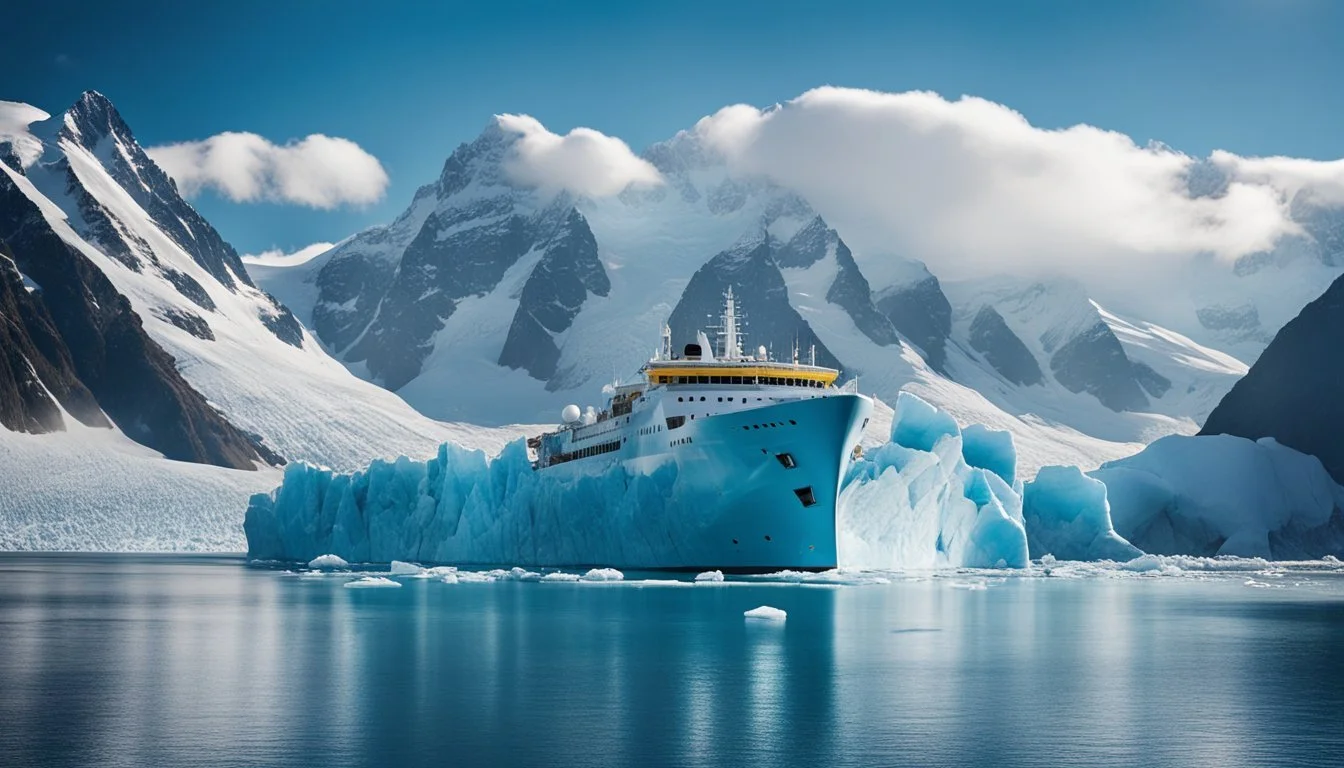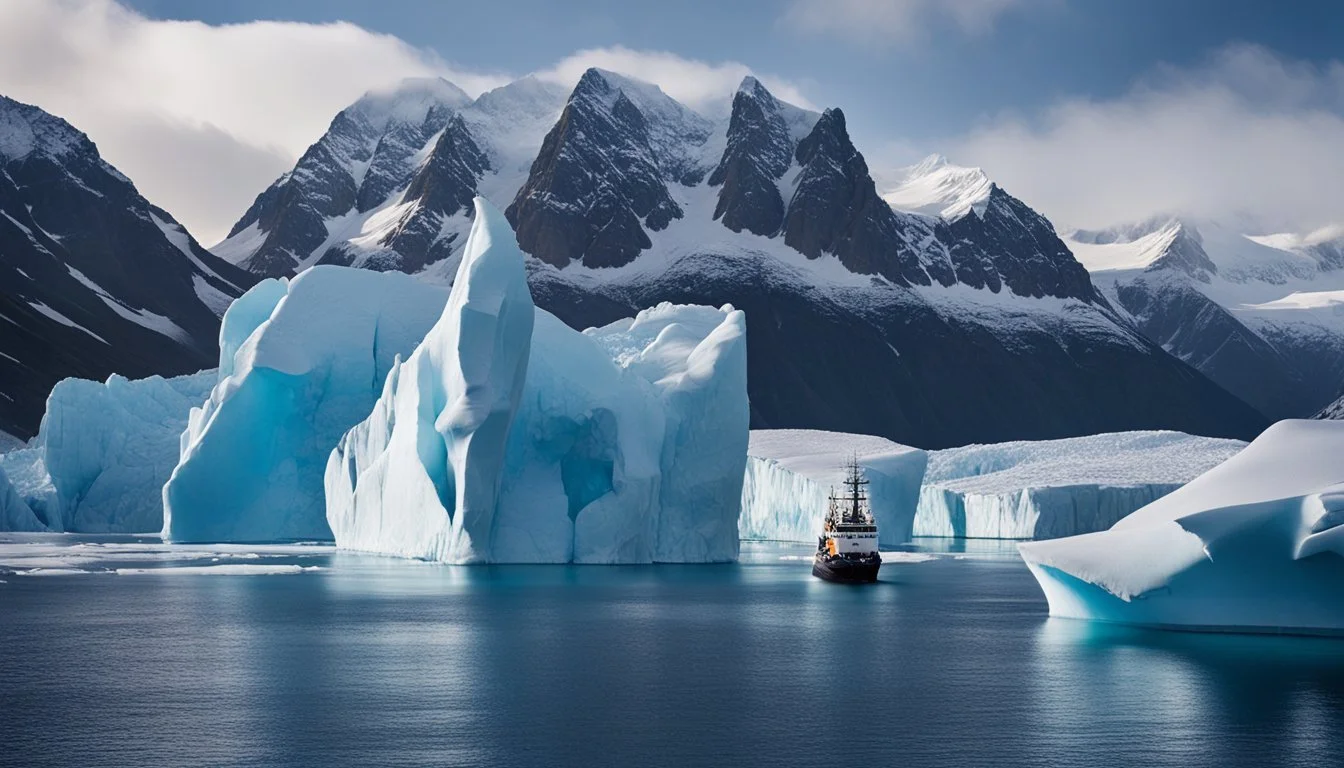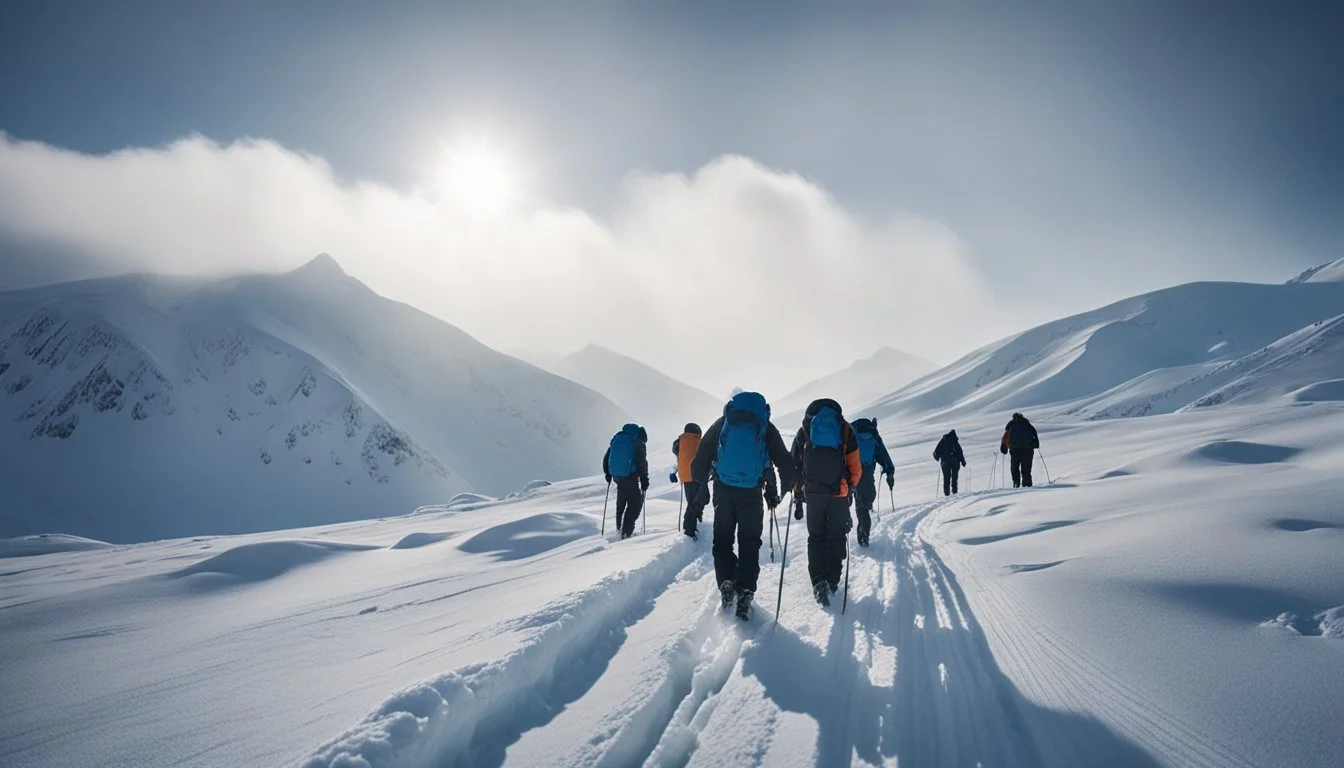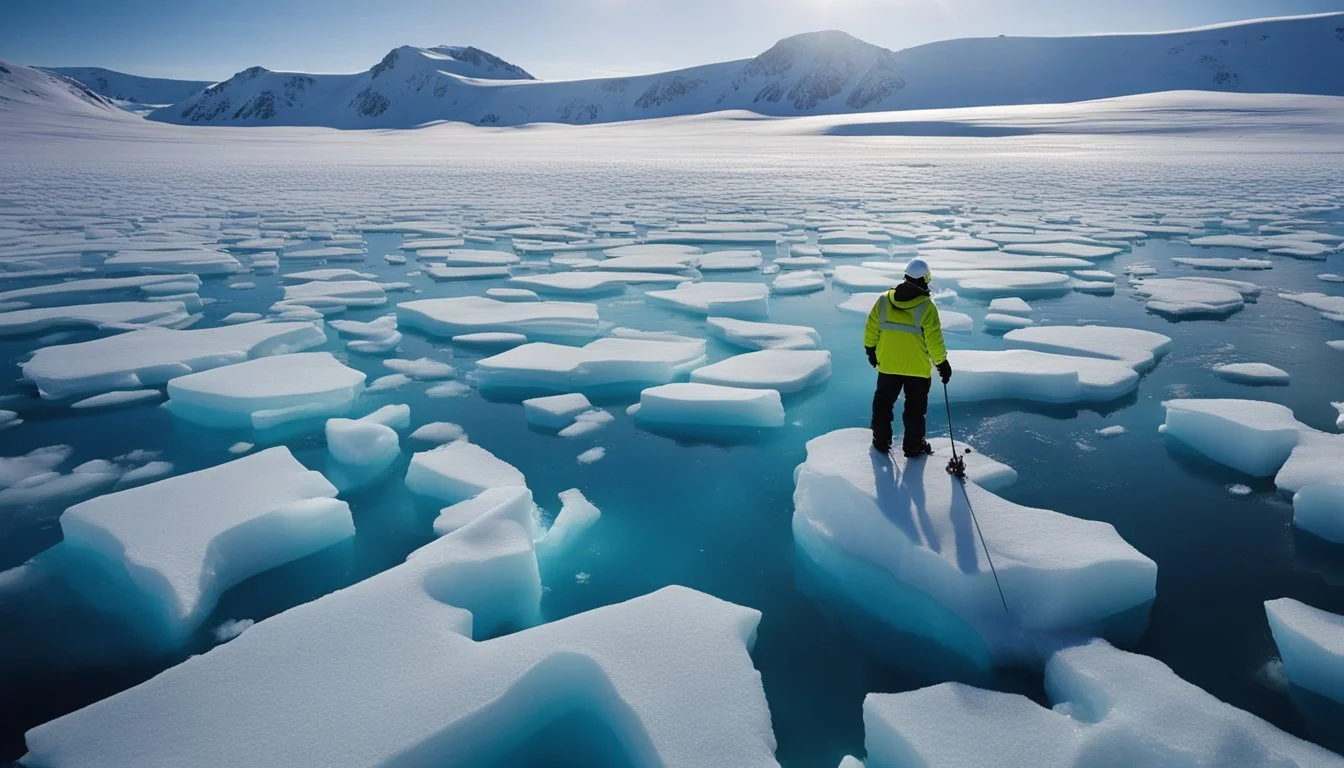6 Must-See Documentaries About Arctic Expeditions
Essential Viewing for Adventure Enthusiasts
Arctic expeditions have captured the human imagination for centuries, revealing the resilience and determination of explorers who brave extreme conditions to uncover the secrets of this remote region. Documentaries about these expeditions offer viewers an immersive experience, highlighting both historical and contemporary journeys through the icy wilderness.
These documentaries provide valuable insights into the challenges and triumphs faced by explorers in one of Earth's harshest environments. The tales of survival, scientific discovery, and the unyielding human spirit are brought to life, making them compelling viewing for anyone interested in adventure, history, and nature.
1) The Last Ice (2020)
"The Last Ice" is a powerful documentary by National Geographic.
It tells the story of Inuit communities in the Arctic who are grappling with significant environmental changes. The focus is on the melting sea ice and how it impacts their traditional way of life.
The film highlights the cultural and ecological challenges these communities face in a rapidly warming world.
The documentary provides a stark visual depiction of the consequences of climate change. It aims to raise awareness about the urgency of the situation. Viewers gain a deeper understanding of the delicate balance between nature and human activity in this remote region.
Directed by seasoned filmmakers, it combines stunning visuals with compelling narratives. Experts and local voices contribute to the film, making it both educational and emotionally engaging.
"The Last Ice" is essential viewing for anyone interested in environmental issues and indigenous cultures.
For more information, visit IMDb.
2) Chasing Ice (2012)
"Chasing Ice" documents the efforts of environmental photographer James Balog and his team as they record the rapid changes occurring in glaciers. Balog, alongside the Extreme Ice Survey, set out to capture undeniable evidence of climate change.
The Extreme Ice Survey utilized time-lapse photography to gather powerful visuals of melting glaciers. This documentary focuses on Balog’s expedition, showcasing the dedication and technological innovation involved.
While Balog’s mission started in Iceland, the project expanded to include multiple locations across the Arctic. The photography and videography capture the stark reality of disappearing glaciers.
For more information, visit Wikipedia.
3) Great Bear Rainforest
The documentary Great Bear Rainforest (2019) explores one of the planet's most pristine and untouched wilderness areas. It presents the Great Bear Rainforest located on the northern coast of British Columbia, Canada. This region is renowned for its lush temperate rainforest and myriad species, some of which are found nowhere else on Earth.
This visually stunning documentary offers a deep dive into the ecosystem that supports grizzlies, coastal wolves, and sea otters. Among its highlights is the elusive spirit bear, a rare subspecies of the black bear with white fur. This bear holds significant cultural importance to the indigenous communities of the area.
Exploring the relationship between the land, its wildlife, and the indigenous peoples, Great Bear Rainforest is both an educational and mesmerizing journey. It provides invaluable insight into the delicate balance of this unique ecosystem and the efforts to preserve it.
For more details about the documentary, visit the IMDB page.
4) Frozen Planet (2011)
"Frozen Planet" is a visually stunning BBC documentary that explores the Arctic's wonders.
It showcases both the beauty and harsh realities of life in one of Earth's most remote regions.
The series captures the seasonal transformations that occur as spring arrives and the sun reappears after five months of darkness.
Narrated by Sir David Attenborough, the series highlights the resilience of Arctic wildlife.
From polar bears to migrating caribou, it provides a detailed look at how these animals have adapted to extreme conditions.
The breathtaking cinematography offers a rare glimpse into the Arctic's majestic landscapes.
Through meticulous filming, viewers can witness the intricate relationships between species and their environment.
Recognized for its high production quality, "Frozen Planet" remains a must-see for anyone interested in Arctic expeditions and wildlife.
For more information on "Frozen Planet," visit IMDB.
5) Arctic Tale (2007)
"Arctic Tale" is a nature documentary created by the National Geographic Society. Released in 2007, it details the life cycles of a walrus and her calf, as well as a polar bear and her cubs. The extraordinary cinematography of Adam Ravetch and co-director Sarah Robertson brings the Arctic landscape to life.
The film draws viewers into the harsh realities of Arctic wildlife, following the young animals as they struggle for survival in an ever-changing environment. Narrated by Queen Latifah, it conveys the animals' experiences without anthropomorphism, allowing the raw beauty and harshness to speak for itself.
"Arctic Tale" also touches on the broader implications of climate change. It offers a glimpse into how global warming affects the habitats and survival strategies of Arctic species. The documentary underscores the importance of understanding these impacts for the future of the planet's biodiversity.
For more information, visit IMDb.
6) Into The Ice (2022)
"Into the Ice" offers a breathtaking exploration of Greenland's melting ice. Directed by Lars Henrik Ostenfeld, this 85-minute documentary showcases stunning aerial shots of the Arctic landscape.
The film balances the beauty of the icy expanse with a stark message about climate change. It examines the impact of rising global temperatures on the Greenland ice sheet.
Viewers are taken on a journey through this frozen world, experiencing both the majesty and the fragility of the environment. The narration provides critical insights into the science behind the melting ice, making it an informative watch for those interested in environmental issues.
For more information, visit the IMDb page: Into the Ice.
Historical Background of Arctic Expeditions
The Arctic has been a focal point for exploration due to its challenging environment and potential for scientific discovery. Over centuries, expeditions evolved from early discoveries to ambitious modern-day endeavors.
Early Arctic Discoveries
In the early exploration period, the Arctic drew the interest of seafarers and traders. During the 16th century, English and Dutch voyages, including those led by Martin Frobisher and Willem Barentsz, aimed to discover new trade routes. They often faced harsh conditions and limited knowledge of the region.
Norwegian explorer Fridtjof Nansen's voyage in the 1890s on the ship Fram was a significant early endeavor. Nansen's expedition was pioneering, pushing farther into the ice than previous attempts and providing valuable data on the Arctic environment.
Significant 19th Century Expeditions
The 19th century marked a period of intense exploration for the Arctic. British explorer Sir John Franklin led an ill-fated expedition in 1845, aiming to map the Northwest Passage. His crew vanished, sparking numerous search missions and international intrigue.
Another noteworthy effort was led by Robert McClure, who, in 1854, became the first to partially traverse the Northwest Passage by ship and sledge, proving it could be navigated. These missions often combined scientific research with the quest for geographical knowledge. Explorers faced treacherous ice, harsh weather, and limited supplies, yet their resilience paved the way for future exploration.
20th Century Exploration and Modern Expeditions
The 20th century introduced technological advancements, making Arctic exploration more feasible. Planes, icebreakers, and satellites transformed the way expeditions were conducted. One notable mission was the Norwegian Roald Amundsen's successful navigation of the Northwest Passage in 1906.
In recent years, large international projects, such as the MOSAiC Expedition (2019-2020), led by the research icebreaker Polarstern, have focused on climate change and its impacts on the Arctic ecosystem. Such expeditions continue to blend traditional exploration with cutting-edge scientific research, offering new insights into this crucial and rapidly changing region.
Challenges Faced During Arctic Expeditions
Exploring the Arctic brings formidable challenges, including severe weather, difficult navigation, and the need for efficient resource management. These factors can significantly impact the success and safety of expeditions.
Extreme Weather Conditions
The Arctic is known for its harsh climate. Temperatures can plummet well below freezing, and blizzards are common. These extreme conditions make it challenging to maintain essential equipment and ensure the safety of the crew.
Frostbite and hypothermia are constant threats. Thick ice and snow can obscure paths, making travel slow and hazardous. Expeditions must be well-prepared with appropriate clothing and supplies to combat the cold.
Wind speeds in the Arctic can reach up to 100 mph, creating a dangerous environment. Proper shelter design and placement are crucial to withstand these furious winds and snowfalls.
Navigational Difficulties
Navigating in the Arctic is exceptionally difficult due to the absence of landmarks and constantly shifting ice. Traditional GPS systems may malfunction in extreme cold or be affected by magnetic interference.
Ice drift poses another significant challenge as it can displace markers and ships. Using satellite imagery and advanced navigation tools is essential for successful expeditions.
The polar night—a period of continuous darkness—further complicates travel. Expeditions must rely on sophisticated technology to traverse the Arctic effectively during these months.
Survival and Resource Management
Survival in the Arctic demands meticulous planning and resource management. Food supplies must be carefully rationed and stored to prevent spoilage from extreme cold or wildlife intrusions.
Water is another critical resource. While surrounded by ice, converting it to drinkable water requires fuel and energy. Efficient fuel usage is necessary for heating, cooking, and transportation.
Communication is vital for safety and coordination, yet establishing reliable communication lines in the Arctic remains challenging. Expeditions often employ satellite phones and other resilient systems.
Skills in emergency first aid and survival tactics are indispensable. Teams need to handle potential injuries or equipment failures promptly to ensure everyone’s well-being.
Impact of Arctic Expeditions on Science and Environment
Arctic expeditions have significantly advanced scientific understanding and environmental awareness. Researchers have uncovered vital insights into climate patterns, ecological changes, and developed new technologies.
Contributions to Climate Research
Arctic expeditions have revealed critical information on the Earth's climate. Scientists have studied ice cores, which contain trapped air bubbles from thousands of years ago, offering a historical record of atmospheric conditions.
Field researchers have also monitored sea ice extent and thickness, providing essential data for climate models. These studies have shown the rapid warming of the Arctic region, influencing global weather patterns and contributing to rising sea levels. The information gathered is crucial for predicting future climate scenarios and developing mitigation strategies.
Ecological Impacts
Expeditions to the Arctic have had profound effects on understanding its unique ecosystems. Scientists have observed changes in species distribution, breeding patterns, and population dynamics.
For example, Arctic expeditions have documented shifts in the habitat ranges of animals like polar bears and seals. These animals are indicators of broader environmental changes. Plant life, also studied extensively, shows how climate change affects vegetation, impacting food chains and overall ecological balance. These observations are vital for conservation efforts and to protect biodiversity.
Technological Advancements
The harsh Arctic environment has driven the development of new technology. Innovations in icebreakers, for instance, have made navigating frozen waters possible.
Advanced remote sensing tools and satellite imagery have become integral in mapping and monitoring the Arctic from afar. Communication technologies have also improved, allowing real-time data sharing and enhancing coordination among research teams. These advancements support not only scientific research but also safer and more efficient expeditions, facilitating further exploration and discovery.






